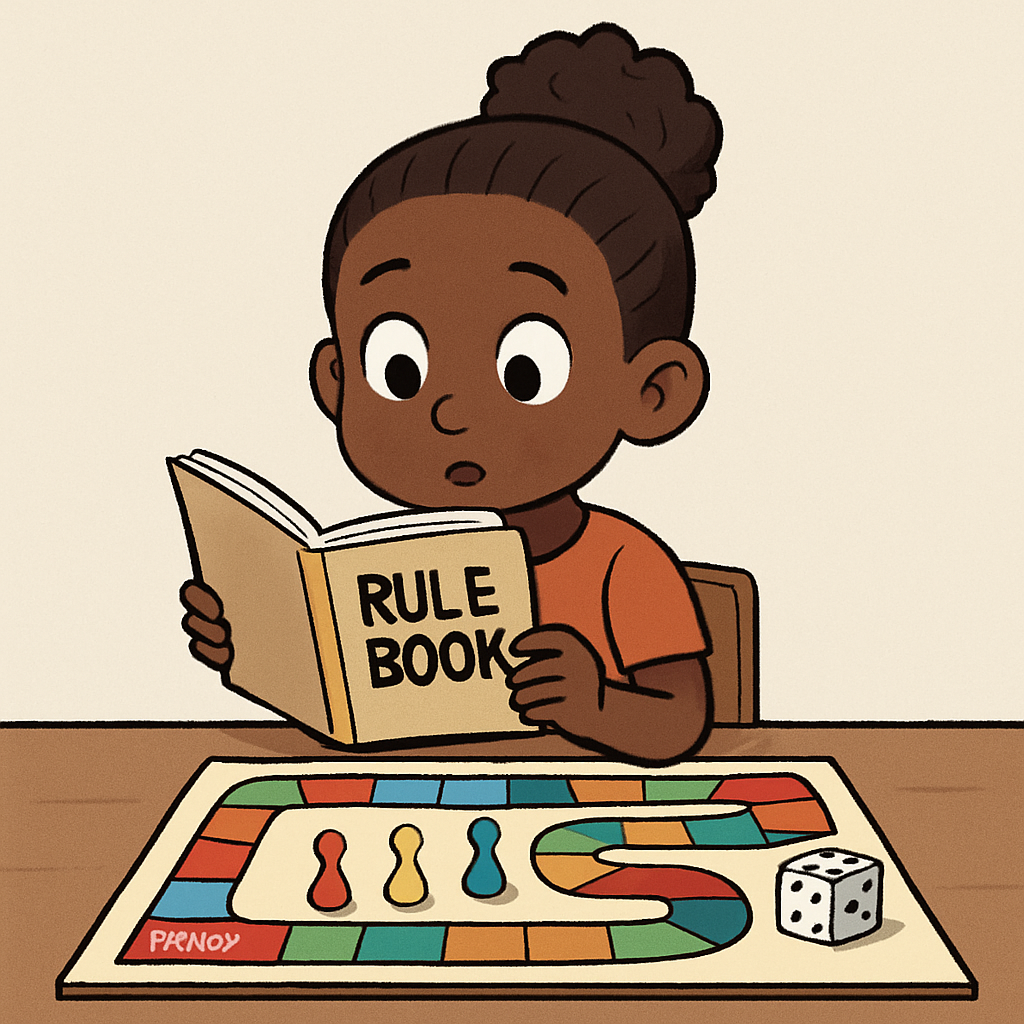
Begin by inviting a few quick examples of familiar games (e.g., Snakes & Ladders, Uno, etc.) and how pupils learned them—by watching, from friends, or by reading a rule card.
Prompt a short discussion on why games need clear rules: they keep play fair, predictable, and safe; they stop arguments; and they let everyone know what to do next.
Ask pupils to recall a time a game felt confusing because a rule wasn’t clear.
On the board, create four headings: Setup, Turns, If → Then rules, and How to win.
Capture one simple example under each heading so everyone can see the structure of a game.
For example with Snakes and Ladders:
Setup — Use a simple path board with ST ART and FINISH, one counter per player, and one die. All counters begin on START.
ART and FINISH, one counter per player, and one die. All counters begin on START.
Turns — On your turn, roll the die and move your counter forward that number of squares. Play passes clockwise.
If → Then rules — If you land on the foot of a ladder, then move up to the top of that ladder. If a you land on the head of a snake, then move it down to the tail.
How to win — The first player to reach the FINISH square wins.
Now we are going to play a game similar to snakes and ladders but the rules are slightly different. Read through these rules with your class and play this game below in the next step!
Setup — Use a 5×5 grid with a single path from START to FINISH at opposite ends (like Snakes & Ladders). Place two counters (Teacher, Class) and one die. Use the interactive board attached in the next step on your screen.
Turn order — Teacher and Class alternate. On your turn, roll the die and move that many squares along the path.
If → Then rules —
If BLUE, then move forward +2.
If RED, then move back −1.
If GREEN, then move forward +5.
If BLACK, then move back −3.
Otherwise, no effect.
How to win — First counter to reach FINISH wins (no exact roll required).
Now it’s their turn to design.
Tell pupils they’ll make their own version of the colour-rules game using the downloadable board template (attached).
Put them in pairs or threes, give each group a template, a die, and counters, then ask them to customise the board with 3–4 colours and write a mini rule set using the same headings: Setup, Turn order, If → Then rules (colours map to in-game effects like move +2 / −1, roll again, swap), and How to win.
Custom Ideas